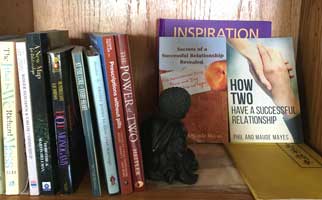Successful Relationship Reading Corner
 In this week's blog, we wrote about the need to balance talking and listening. We didn't find any discussions about this balance, but here are some good links on active listening. In this week's blog, we wrote about the need to balance talking and listening. We didn't find any discussions about this balance, but here are some good links on active listening.
Active Listening: The Art of Empathetic Conversation "It is time to focus again and practise the skill of mindful listening. Not just because we owe our full attention to others when we converse, but because the positive emotions of a truly good conversation have the potential to make us happy!"
Active Listening: The Master Key to Effective Communication "The sense that we are not being listened to is one of the most frustrating feelings imaginable. Toddlers scream about it, teenagers move out, couples split up, companies breakdown. One of the main reasons this breakdown in communication occurs is that listening (like reading, thinking clearly and focusing) is a skill which we rarely consider to be something requiring knowledge and practice."
How to Listen and Build Deeper Connections with People "We’ve never had more excuses to not listen. As technology advances and content explodes, we continue to spread our attention across multiple screens, problems, and people — often all at once. As a result, attention has become one of the scarcest resources — and one of the most valuable. People who can truly listen have a unique edge in a world fragmented by distraction."
|
|